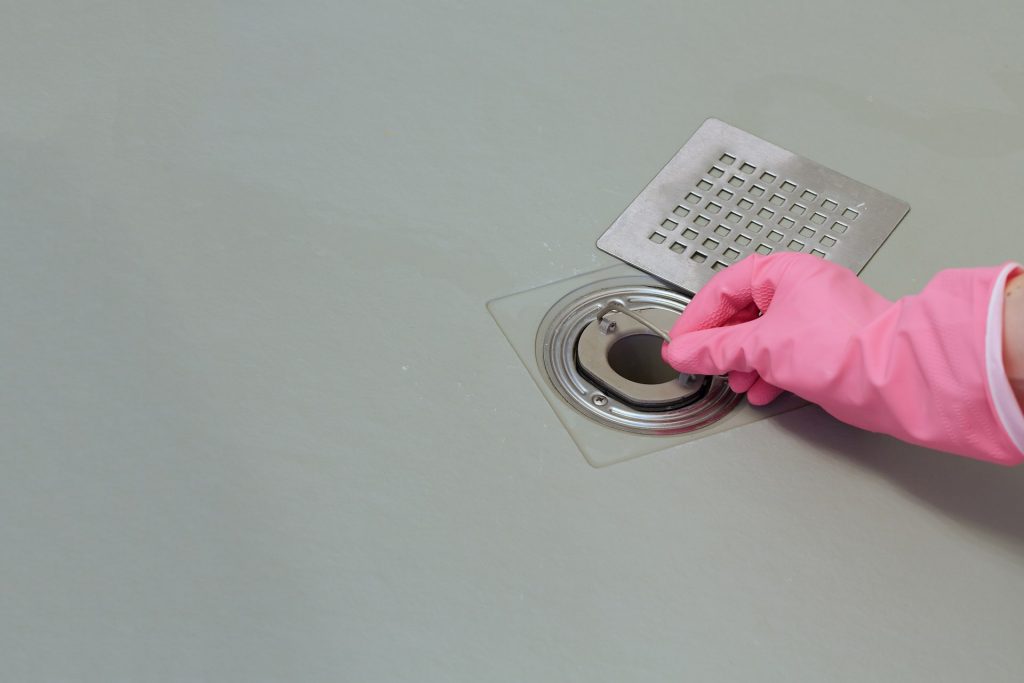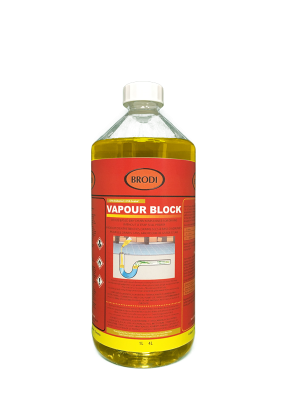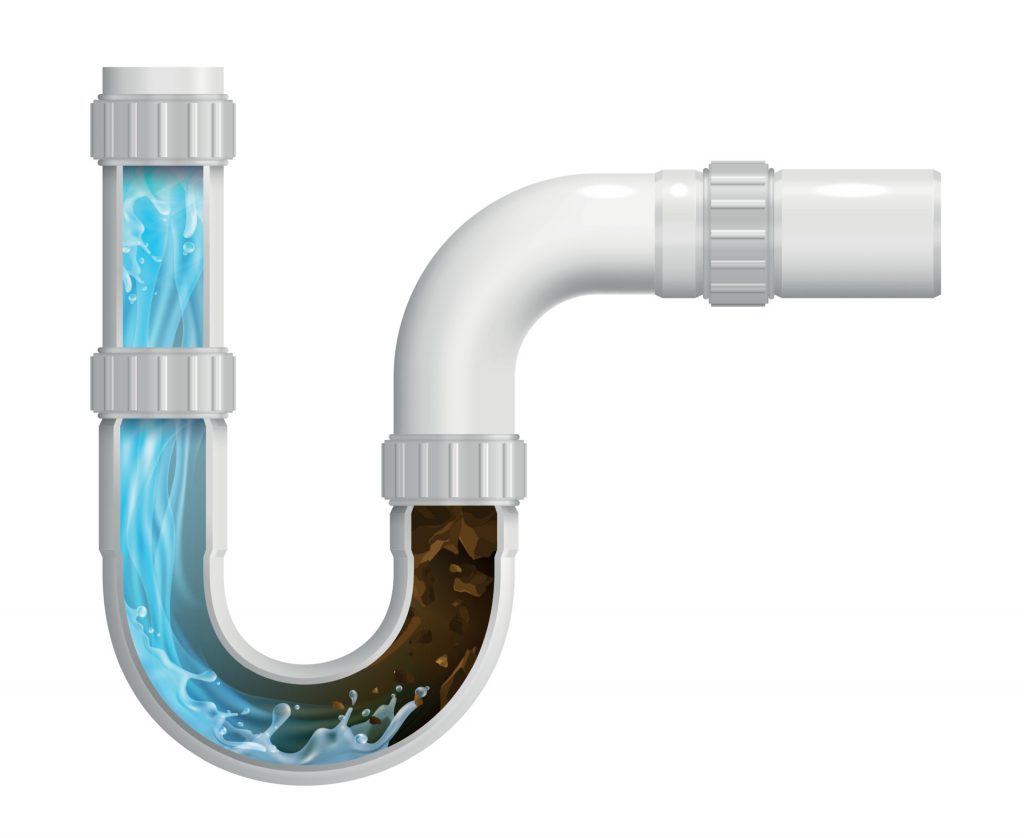Unpleasant odors wafting from floor drains can be a persistent issue in both residential and commercial spaces. The stench not only creates an uncomfortable environment but may also indicate underlying problems with drainage systems. In this comprehensive guide, we’ll explore effective strategies to keep your floor drains odor-free, ensuring a fresh and hygienic atmosphere.
Importance of Floor Drain Maintenance
Maintaining a clean and functional environment is essential for both residential and commercial spaces. One often overlooked yet critical aspect of this upkeep is floor drain maintenance. Floor drains play a pivotal role in preventing water accumulation, facilitating proper drainage, and averting potential hazards. Neglecting their care, however, can lead to a myriad of issues, with drain odors being a primary concern.

Understanding the Causes of Drain Odors
Unpleasant drain odors are often the result of accumulated debris, grease, soap scum, and other organic matter within the pipes. Over time, these substances can create a breeding ground for bacteria and fungi, leading to foul smells emanating from the drains. Additionally, stagnant water in the trap can evaporate, allowing sewer gasses to escape into the living or working space.
Regular floor drain maintenance is essential to prevent these issues. Simple tasks like removing debris, flushing drains with hot water, and using environmentally friendly cleaning solutions can go a long way in keeping the drains clear and odor-free. Timely maintenance not only ensures a pleasant environment but also prevents the potential health hazards associated with neglect.
The Health and Safety Implications of Neglecting Floor Drain Maintenance
1. Bacterial Growth:
Stagnant water and organic matter in neglected drains create an ideal environment for the growth of harmful bacteria. These bacteria can pose serious health risks, leading to infections and respiratory issues when they enter the air through drain odors.
2. Mold and Fungi:
Moisture and debris in drains contribute to the growth of mold and fungi. The release of mold spores into the air can trigger allergies and respiratory problems, affecting the well-being of occupants, especially those with pre-existing respiratory conditions.
3. Insect Infestations:
Standing water and organic material in drains attract insects such as flies and mosquitoes. These pests not only contribute to unsanitary conditions but can also carry diseases, putting the health of residents or employees at risk.
4. Structural Damage:
Neglected drains can lead to water damage and compromise the structural integrity of the building. Moisture seeping into walls and foundations can result in costly repairs and pose long-term risks to the safety of the structure.
5. Unpleasant Work or Living Environment:
Persistent drain odors can have a significant impact on the overall quality of life or work. Unpleasant smells can cause discomfort, reduce productivity, and create an unwelcoming atmosphere for both residents and employees.
The importance of floor drain maintenance cannot be overstated. Regular upkeep not only prevents the foul odors that result from neglected drains but also safeguards the health and well-being of the people in the space.
Why Do Floor Drains Develop Odors?
Before we delve into the solutions, it’s important to understand why floor drains develop odors in the first place. Typically, odors occur due to a buildup of organic matter, such as hair, soap scum, dirt, and food particles, that gets trapped in the drain. The decaying organic matter creates an environment for bacteria and other microorganisms to thrive, resulting in unpleasant odors.
Maintaining a clean and functional environment requires a comprehensive approach, and one often overlooked aspect is the regular cleaning of floor drains. These drains play a crucial role in preventing water damage, foul odors, and potential health hazards. Let’s dive into the significance of regular cleaning step-by-step instructions for a thorough cleaning, and recommendations for establishing a cleaning routine.
Step-by-step instructions for cleaning your floor drain
Regular Cleaning
The first and most important step in preventing floor drain odors is regular cleaning. Establishing a cleaning routine helps remove any accumulated debris and reduces the chances of bacterial growth. Here’s a step-by-step process for cleaning your floor drain:
- Remove the drain grate or cover.
- Use gloves to manually remove any visible debris or sediment from the drain. You can use a brush or a small scoop for this.
- Prepare a mixture of hot water and mild detergent.
- Pour the mixture down the drain and scrub the interior of the drain using a long-handled brush or a drain brush specifically designed for this purpose.
- Rinse the drain thoroughly with clean water to remove any detergent residue.
Perform this cleaning process at least once a month or more frequently if you notice any odors developing.
Baking Soda and Vinegar
If you’re dealing with stubborn odors, a combination of baking soda and vinegar can prove to be highly effective in eliminating them. Baking soda, or sodium bicarbonate, is a natural deodorizer and mild abrasive, while vinegar is a powerful cleaning agent. Here’s how you can use them to freshen up your floor drain:
- Start by pouring a cup of baking soda down the drain.
- Follow it with a cup of vinegar.
- Let the mixture fizz and react for a few minutes, as it helps break down the organic matter causing the odor.
- Finally, flush the drain with hot water to wash away the residue.
This simple home remedy can help neutralize odors and improve the overall freshness of your floor drain. Repeat this process regularly to effectively control unpleasant smells.
Flush with Hot Water
In addition to regular cleaning, flushing your floor drain with hot water is a simple yet effective method to keep it odor-free. Hot water helps melt and flush away any build-up or debris inside the drain pipe. Follow these steps to flush your drain with hot water:
- Bring a large pot of water to a rolling boil.
- Slowly pour the boiling water down the drain, making sure it reaches the pipe as far as possible.
- Repeat this process at least once a week to prevent any build-up and maintain a clean-smelling drain.
Hot water not only helps remove potential odor sources but also improves the overall flow of the drain. It’s a quick and easy maintenance practice that can go a long way in keeping your floor drains odor-free.
Install Drain Traps or Screens
Prevention is always better than a cure. Installing drain traps or screens is a proactive measure to prevent debris and solid particles from entering the drain in the first place. These devices act as filters, capturing hair, dirt, food particles, and other objects before they can become trapped and cause bad smells.
There are various types of drain traps and screens available, including mesh screens, strainers, and built-in traps. Choose one that suits your specific drain type and make sure the device is compatible with your floor drain. Regularly clean and empty the trap or screen to maintain its effectiveness in preventing odors.
Consider Using Citrus-Based Dry Drain Maintainer
In addition to enzyme cleaners, another environmentally friendly option to combat odors in your floor drains is using citrus-based dry drain maintainers. These products utilize the natural cleaning power of citrus to break down organic matter and eliminate odors. Here’s how you can use a citrus-based dry drain maintainer:
- Purchase a citrus-based dry drain maintainer designed Vapour Block
for your floor drain system.

- Follow the instructions on the product’s label for the recommended amount to use.
- Pour the citrus-based dry drain maintainer down the drain, ensuring it reaches the pipe as far as possible.
- Allow the product to sit for the recommended period, typically several hours or overnight.
- Flush the drain with hot water to remove any residue and ensure the product is fully rinsed away.
Citrus-based dry drain maintainers not only effectively eliminate odors but also help prevent future buildup, providing a long-lasting solution for odor-free floor drains. Check Brodi for more maintenance items.
Recommended Cleaning Frequency and Tips for Maintaining a Schedule
Frequency:
The recommended frequency for floor drain cleaning depends on factors such as usage and the type of debris present. For residential spaces, a monthly cleaning routine is often sufficient. In high-traffic commercial areas, more frequent cleaning may be necessary.
Establish a Schedule:
Incorporate drain cleaning into your regular cleaning schedule. Whether you clean weekly, bi-weekly, or monthly, consistency is key to preventing issues before they arise.
Monitor High-Traffic Areas:
Pay special attention to drains in high-traffic areas or places where debris accumulates quickly. These areas may require more frequent cleaning to ensure optimal performance.
Professional Maintenance:
If you’ve tried the above methods and are still experiencing persistent odors, it’s time to seek professional help. A plumbing professional can assist you in identifying the root cause of the odor and perform more thorough cleaning and maintenance procedures.
A plumber may use specialized equipment, such as a drain snake or hydro jetting, to remove stubborn clogs or blockages that could be contributing to the odor. They can also inspect the drain pipe for any cracks, leaks, or damaged seals that may require repair or replacement.
While professional maintenance may come with a cost, it offers a comprehensive solution to your floor drain problems and ensures long-term odor prevention.
Installing Drain Traps or Screens: A Key Strategy for Preventing Unpleasant Odors
Installing drain traps or screens is a proactive measure that not only prevents debris from entering your plumbing system but also plays a crucial role in controlling drain odors. In this guide, we’ll explore the importance of prevention, provide an overview of different types of drain traps and screens, offer step-by-step instructions for installation, and share tips for cleaning and maintaining these devices.
The Importance of Prevention in Controlling Drain Odors
1. Odor Prevention:
Drain traps and screens act as barriers, preventing debris and organic matter from entering the drain. By stopping these substances before they can accumulate in the pipes, you significantly reduce the risk of foul odors emanating from the drain.
2. Bacterial Growth Mitigation:
By blocking the entry of debris, drain traps and screens also inhibit the growth of bacteria and fungi in the pipes. This is essential for maintaining a hygienic environment and preventing potential health hazards.
3. Long-Term Maintenance:
Investing in prevention measures ensures long-term maintenance of your plumbing system. Regular cleaning becomes more manageable, and the risk of costly repairs due to clogs or pipe damage is significantly reduced.
Overview of Different Types of Drain Traps and Screens
P-Trap:
The classic P-trap is a U-shaped pipe that holds a small amount of water, creating a barrier between the drain and the air in the pipes. This water barrier prevents sewer gases from entering the living or working space.
Mesh Screens:
Mesh screens are simple, cost-effective devices that fit over the drain opening. They catch hair, debris, and other particles, preventing them from entering the drain.
Basket Strainers:
Commonly used in kitchen sinks, basket strainers are inserted into the drain opening to catch food particles and prevent clogs.
Pop-Up Stoppers:
Often found in bathroom sinks and tubs, pop-up stoppers not only prevent debris from entering the drain but also provide a convenient way to stop or release water flow.
Step-by-Step Instructions for Installing Drain Traps or Screens
Choose the Right Type:
Identify the type of drain trap or screen that best suits your needs based on the type of drain and the potential for debris.
Remove Existing Debris:
Before installing, ensure the drain is free from existing debris. Use a snake or other tools to clear any obstructions.
Install P-Trap:
For P-traps, carefully install the U-shaped pipe, ensuring a proper seal. Tighten the connections, but be cautious not to overtighten and damage the fittings.
Place Screens or Stoppers:
Position mesh screens, basket strainers, or pop-up stoppers over the drain openings. Make sure they fit securely and can be easily removed for cleaning.
Tips for Cleaning and Maintaining Drain Traps or Screens
Regular Inspection:
Periodically inspect the traps or screens for any signs of damage or wear. Replace them if necessary.
Routine Cleaning:
Incorporate regular cleaning of traps or screens into your overall maintenance routine. Remove and clean them to prevent buildup.
Use citrus-based Cleaners:
Consider using citrus-based Vapour Block cleaners to break down organic matter in traps and pipes, promoting optimal functionality.
Professional Maintenance:
If you encounter persistent issues or notice a decline in drainage performance, seek professional assistance. Plumbers can conduct thorough inspections and provide solutions for more complex problems.
Installing drain traps or screens is a practical and effective way to prevent drain odors and maintain a healthy plumbing system. By choosing the right type, following proper installation steps, and implementing routine cleaning and maintenance, you can ensure that these devices continue to serve their purpose effectively, contributing to a clean and odor-free living or working space.
Additional Tips and Best Practices for Floor Drain Maintenance
Keeping Floors and Surrounding Areas Clean and Dry
Maintaining a clean and dry environment around your floor drains is paramount for effective drain performance. Regularly sweep or mop the floors to prevent debris from entering drains, and promptly address spills to avoid potential water damage. A dry environment reduces the likelihood of mold, bacterial growth, and unpleasant odors.
Avoiding Common Mistakes in Floor Drain Maintenance
While caring for your floor drains, it’s crucial to steer clear of common mistakes. Avoid using harsh chemical cleaners that can damage pipes or harm the environment. Additionally, refrain from pouring grease or oil down drains, as these substances can solidify and lead to clogs. Opt for environmentally friendly cleaning solutions and dispose of grease in designated containers.
Regular Inspections for Potential Issues
Implementing routine inspections is a proactive measure to identify potential issues before they escalate. Check for signs of water damage, leaks, or unusual odors around floor drains. Addressing problems at an early stage can save you from more extensive repairs and ensure the continued functionality of your drainage system.
Maintenance Reminders and Checklist
Creating a maintenance checklist and setting regular reminders can help you stay on top of floor drain care. Include tasks such as clearing debris, flushing drains with hot water, and inspecting drain traps or screens. Whether you use digital tools or traditional methods, a checklist ensures that no aspect of maintenance is overlooked.
Maintenance Checklist:
✅ Clear debris from drains.
✅ Flush drains with hot water.
✅ Inspect and clean drain traps or screens.
✅ Check for signs of leaks or water damage.
✅ Use enzyme cleaners for bacterial control.
✅ Conduct periodic professional inspections.
Conclusion
Keeping your floor drains odor-free requires regular maintenance and preventive measures. Incorporating these practices into your cleaning routine will help you eliminate odors and maintain a fresh-smelling environment. Regularly clean your floor drains, use baking soda and vinegar, flush with hot water, install drain traps or screens, consider enzyme cleaners, and seek professional maintenance if needed.
By committing to regular maintenance, you not only prevent potential issues but also contribute to the overall well-being of your living or working space. A clean and odor-free environment awaits those who take the initiative to care for their floor drains. Follow the guide, make it a habit, and enjoy the benefits of a healthier and more pleasant living or working environment.



Appreciate you for sharing these kinds of wonderful threads. In addition, an excellent travel in addition to medical insurance strategy can often relieve those worries that come with touring abroad. A medical emergency can in the near future become costly and that’s sure to quickly put a financial weight on the family finances. Having in place the best travel insurance offer prior to setting off is worth the time and effort. Thank you